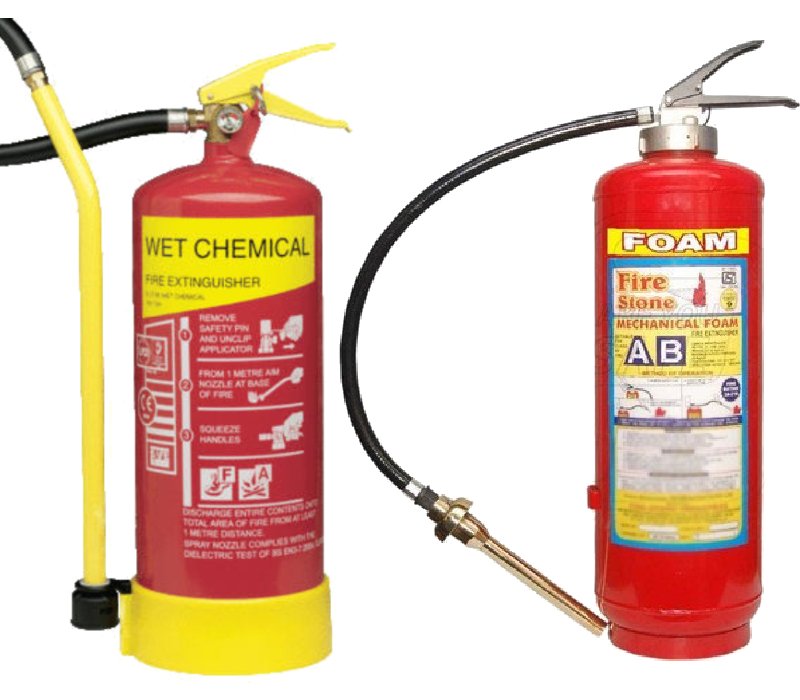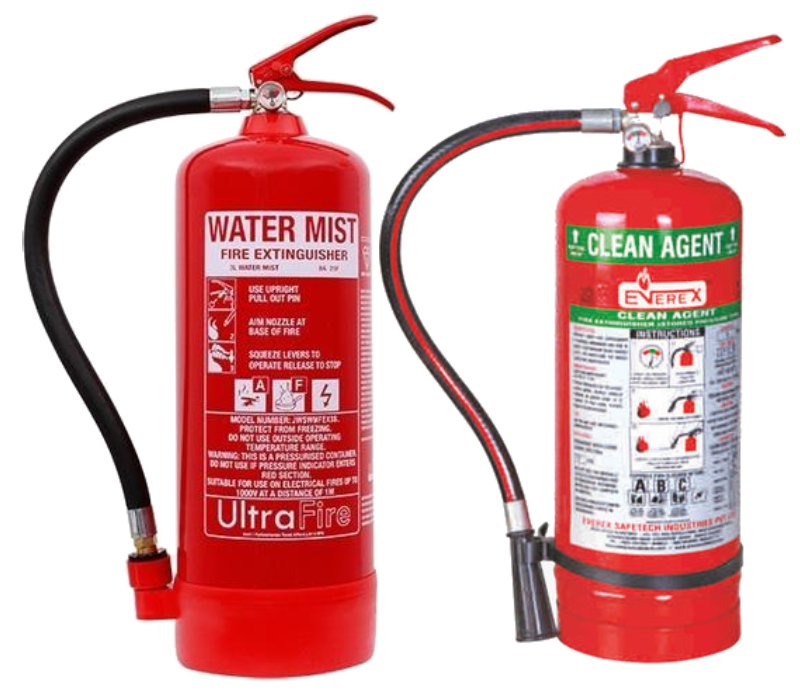6 Types of Fire Extinguishers and Their Uses

6 Types of fire extinguishers and their uses
Types of Fire Extinguishers
To achieve safety for your place of work, you need to ensure that you have the proper extinguisher installed relevant to the potential fire hazards for your building. The only single extinguisher can be used to tackle every fire. Because each type of fire extinguisher has different classes of fire on which it is practical, selection can be a minefield.
The first step is to look at what materials are present in the area to be protected from fire. These can be divided into some categories of fire concerning different substances:
- Class A, combustible carbon-based solids. For example, paper, wood, or textiles
- Class B, flammable liquids. For example, paraffin, petrol, diesel, or oil (but not cooking oil)
- Class C, flammable gases. For example, butane, propane, or methane
- Class D, burning metals. For example, aluminum, lithium, or magnesium
- The fire is generated by electrical equipment (indicated by an electric spark symbol and not the letter E)
- Class F, fats and cooking oils.
TYPES OF FIRE EXTINGUISHERS
Now that you have a basic knowledge of the various types of Fire Extinguishers. Why different fire extinguishers are required, and following main types of fire extinguishers are: –
1. ABC POWDER FIRE EXTINGUISHER
An ABC powder fire extinguisher has many benefits. It is a multi-purpose extinguisher and is, therefore, one of the most familiar extinguishers to have on hand.
A powder extinguisher sprinkles a suitable chemical powder formed most commonly of Monoammonium Phosphate. It acts to blanket the fire and choke it.
Powder extinguishers are sufficient for type A, B, and C fires. It is not an electrical conductor and can effectively break the chain reaction in a liquid or gas fire. Something a water extinguisher cannot do.
2. CARBON DIOXIDE FIRE EXTINGUISHER
A carbon dioxide (CO2) fire extinguisher is one of the purest types of fire extinguishers. To utilize as it leaves no remains and needs no cleanup.
The CO2 extinguisher does exactly extinguisher CO2. By doing so, it discharges oxygen from the fire, effectively suffocating it oxygen. It is perfect for supporting class B fires. And that includes flammable liquids and electrical fires.

3. WET CHEMICAL FIRE EXTINGUISHER
The wet chemical extinguisher is a technological type primarily concentrated on class K fires, those regarding cooking media such as animal and vegetable fats or oils. These extinguishers have a key comprised of potassium that effectively establishes a two-pronged attack on fires. First, the liquid mist it sprinkles acts to stop the fire. Second, due to the chemical reaction of the solution with the cooking medium. A thick soap-like substance forms, sealing the surface of the liquid to control re-ignition.
The wet chemical extinguisher is perfect for a kitchen setting and class K fires. But, it can also be effective for class A fires where a material such as wood or paper has caught fire.
4. FOAM FIRE EXTINGUISHER
Foam fire extinguishers are suitable for class A and the flammable liquids of class B, though not effective for gaseous fires. They spray foam that expands when it hits the air and blankets the fire. This blanket has the vapors from rising off the liquid to provide the fire, thus hungering it of fuel. Also, because the foam is mixed with water, it has a cooling effect as well.

Foam extinguishers are some of the best for liquid fires, such as gasoline fires, but can also use on Class A fires involving solid combustibles like wood.
5. WATER MIST FIRE EXTINGUISHER
The most versatile of the set, the water mist extinguisher, utilizes a newer technology that performs across most classes of fire. This type of extinguisher removes microscopic water molecules that fight the fire on a variety of levels. First, because so much water disperses in such a microscopic fog-like form, the oxygen level in the air decreases, which helps to suffocate the fire. Second, the water particles draw to the fire and, as water always does, act to cool it, reducing the temperature.
Finally, and perhaps what is most unique about the water mist extinguishers, is that the water has been de-ionized (the minerals have been removed). As a result, it can be used on electrical fires, as the de-ionized water will not act as a conductor, as well as on burning liquids/gases that a standard water extinguisher could not be applied to. Thus, a water mist extinguisher is safe and effective for use on classes A, B, C, and K fires.
6. CLEAN AGENT FIRE EXTINGUISHER
A clean agent fire extinguisher is a type of gaseous fire suppression. Kept in its liquid form, when it is sprayed and hits the air.

It transforms to its gas form that is non-conductive, safe for use while humans are present, leaves no remains, and has a very short atmospheric, making it eco-friendly.
The gas, often composed of Halon, extinguishes fire by decreasing the oxygen levels and checking the chain reaction. Because it is non-conductive and so neat, it is perfect for rooms or businesses filled with electrical and computer equipment. They most commonly used for class B and C fires.
Fire Extinguisher Uses
Though extinguishers come in a number of shapes and sizes, yet all Fire extinguisher work in a similar manner. You can use it in four steps which named PASS:
P: Pull the Pin
A: Aim at the Base of Fire
S: Squeeze the Operating Handle
S: Sweep from Side to Side
Conclusion
An extreme fire can shut down a workplace, resulting in significant employment losses, in addition to possible damage and death. Comprehensive firefighting training can help decrease the risk of fire to persons and belongings by training everyone how to work together to control fires.
